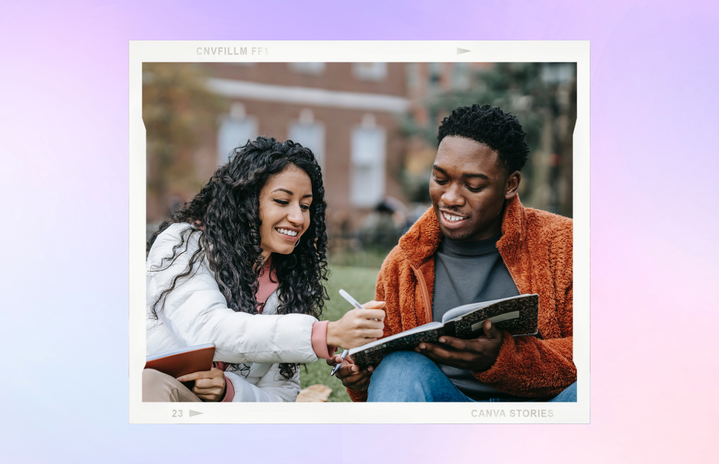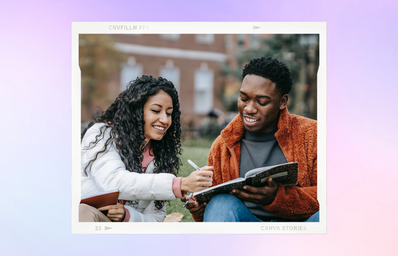College may be the first time many college students are away from home for a considerable length of time. In order to cope with the change, they will be in need of a new social network in order to navigate the various resources, take classes, and pursue extracurricular activities. The desire to make friends or seek community is completely natural. If your college study groups don’t pan into friendship, you can turn to Greek life, join an advocacy group, and/or major-oriented clubs. Joining identity-based affinity groups, like LGBTQ+ support groups or cultural organizations, can also provide community.
But joining identity-based groups like cultural organizations can be difficult for racially-mixed students who have multiple racial identities. For multiracial students who may not identify exclusively with the cultural organizations they join, there are barriers to fully committing. Here’s what seven racially mixed students said about their experiences with cultural organizations.
Mixed students may feel “not Enough”
Many respondents reported that they feel “not enough.” Juliet,* 19, tells Her Campus, “I definitely feel some inferiority partially because I’m only half Japanese, while a lot of full-Asians are in the Tomo No Kai club. Culturally, I know that I’m not explicitly ‘half,’ but the dimension of being an American makes me feel not Asian enough, especially when I want to engage with the actual society and culture from Japan.”
Mixed people being called “half” can be a cultural norm in mainstream media. However, Juliet is aware she is not actually 50% Japanese. Being mixed doesn’t dilute your heritage, especially when you choose to embrace it. The percentage heuristic relates to the blood quantum rule that the federal government imposed on Native Americans to determine citizenship status. Similarly, the “one drop rule” from the Jim Crow era permeates to today’s understanding of race — a single drop of Black blood pushed people with mixed ancestry into the subordinate class. Hiding your Blackness was critical in order to survive. Thus, in a world that is anti-Black and colorist, being white-passing is a privilege given that race is often based on physical appearance.
Jared,* 21, stopped pursuing cultural clubs all together as a result. “I don’t look Filipino and I got tired of having to justify my presence and participation in those spaces,” he tells Her Campus. His Blackness dominates how people perceive him.
“There’s this recurring dismissal of one or more of my identities when I enter a new space. It’s like I have to fit into one box.”
Despite having a similar experience to Jared, Cindy, 22, continues pursuing identity-based clubs in an effort to make friends. “There’s this recurring dismissal of one or more of my identities when I enter a new space,” Cindy tells Her Campus. “It’s like I have to fit into one box. People choose which one they want to identify me with, because I guess being both is too hard to understand. Right now, I am used to not being identified as Arab. Yet I’ve never been denied my Latinidad. That is something that scares me.” Cindy poses an important question: Why can’t you just be allowed in all spaces?
Cindy wants to be seen for the sum of her parts, as a multifaceted person with many identities.
there is a fear of being tokenized
Based on their everyday experiences, some mixed students are aware of the potential of being tokenized by members of cultural organizations for their other race(s).
This prevents Daniel,* 17, from joining a cultural organization. “I pursue activity and hobby-based clubs instead where race isn’t the central topic of conversation,” they tell Her Campus. “When people ask what my ethnic mix is, I don’t tell them. I can’t think of a single selfless reason for them wanting the answer. People ask that question to attribute my personal characteristics onto one of my races.”
Daniel is describing a type of mental bias called confirmation bias, a psychological phenomenon in which a person interprets evidence to support their existing beliefs, expectations, or hypotheses. “If I’m the only different one, the token one, they could take my words to represent my entire community,” Daniel says. “They can develop a sort of out-group prejudice for that other race that is distinct from themselves.” Unconscious or implicit bias can affect mixed students’ experiences in cultural clubs, and how club members perceive that race.
don’t make racially-mixed Students Prioritize one club
For the average college student, being in school and experiencing burnout may feel synonymous. You often need to pick which extracurricular activities to prioritize while dropping others, which presents a special predicament for multiracial folks in corresponding identity groups.
“In contrast to someone who may be mixed with white, there are at least two major pan-ethnic potential organizations I could join,” Daniel says. “I already feel busy as is, so I don’t want to put myself in that position of needing to pick which cultural organization I should spend more time with. So, I don’t.”
Cindy points out that not everyone has this access. She would join another cultural organization, but she can’t find the right fit for her. “I can’t find a Central American club on campus,” Cindy says. “I have been in Arab groups but I often feel like I’m in the wrong place.” Cindy often feels divided by her two identities.
You Can Define Your Culture For Yourself
Some students choose to opt out of cultural organizations because they are on their own journey to connect with their ethnic roots. “When it comes to how I define my cultural identity, I don’t want to follow a made-up check-off list to measure how much I am connected to either side of my ethnic identity because it’s classist,” Rehana, 21, tells Her Campus. “Access to culture is an extremely privileged concept that many people do not have, including myself.”
“When it comes to how I define my cultural identity, I don’t want to follow a made-up check-off list to measure how connected I am to either side of my identity.”
Being able to speak a certain language, eat particular foods, understand particular references, or visit the motherland do not equate to having successfully proven your heritage. It’s a matter of access. Did you grow up able to spend quality time with your parents? Do they have the mental capacity to teach you about your family history? Can you afford to buy a plane ticket and take time off? Your socioeconomic status and geographic location determine a lot of your access to certain cultural staples like ethnic food and quality time with people like you. According to the U.S. Department of Agriculture, racial and ethnic minorities made up 22% of the rural population in 2018, compared to 43% in urban areas. Mixed people from small towns have less chances to meet people of similar racial backgrounds. Even on diverse college campuses, it is rare to meet people with the exact same ethnic background.
Out of necessity, Rehana says, “I actively hangout with people who share my personal interests and goals. While ethnic- and race-based spaces can be a safe and supportive for people, it more so fits my experience to be around students who come from different backgrounds.” Within one racial or ethnic group is much diversity so having that be the defining trait of a relationship can be precarious, or even dangerous. There are other aspects to bond over.
Juliet is on a similar journey. “My mixed identity gives me inspiration to define what not only being Japanese-American means to me, but specifically what being both means to me and my relationship with my culture and heritage,” she says. Juliet knows she’s unique. Her heritage is something special that only she gets to decide for herself. Other people simply are mentors to guide her along the way.
Cultural Organizations Can Be Rewarding Experiences
Camelia, 18, sought out a cultural club to intentionally connect with others to celebrate her heritage. “When I first joined Kababayan at UC Irvine, I was a little nervous about being around so many Filipinos in my life, especially since I didn’t have that growing up, and feeling like I wouldn’t fit in completely because I didn’t ‘look’ Filipina or necessarily have the same experiences,” she tells Her Campus. Camelia was aware of her struggles but persisted anyway because she remembered her goal. “After attending many meetings and events, I felt so welcomed and was able to learn so much from other members,” she says.
“Being mixed has always made me feel like I am not good enough for either race, Black or white. It wasn’t until I realized that I have similar struggles as my Black peers, that I am enough.”
Joining the Black Student Union changed Zoë’s, 19, perception of herself. “Being mixed has always made me feel like I am not good enough for either race, Black or white,” she tells Her Campus. “It wasn’t until I realized that I have similar struggles as my Black peers, that I am enough. BSU has given me such a great support system, and I owe them a lot.”
Cultural Organizations Could Be More Rewarding, For More People, With These Changes
Based on the experiences of the respondents, many entered university with certain fears and feelings of not being worthy to enter the spaces meant for them. Referring to mixed people as “half” assumes that mixed people are not full-beings capable of celebrating their ethnicities in the mainstream messaging. It affects the way mixed people and others view mixed people. Multiracial people don’t have to align or feel more connected to “one side” of their heritage, so don’t tokenize them or make them prioritize one of their identities.
Once in college, Cindy and Rehana point out that there’s a need for more cultural clubs to encompass specific identities. College campuses are lacking to account for their diverse populations. Furthermore, each club needs to adopt a multicultural lens to account for the diaspora and their multiracial members.
Cultural organizations exist as resources to connect with your heritage and meet similar people. Going to college is the chance to find yourself. You can meet different people, are exposed to different ideas, and essentially self-select your involvements to actively shape who you are. Mixed students have to grapple with having a hybrid, or even non-binary, identity that goes beyond the scope of one club. Each mixed person can decide if cultural organizations are the best way to prescribe meaning to their heritage. They can decide how to assign meaning to their heritage, and whether that is facilitated through a cultural organization or not.
*Names have been changed.


